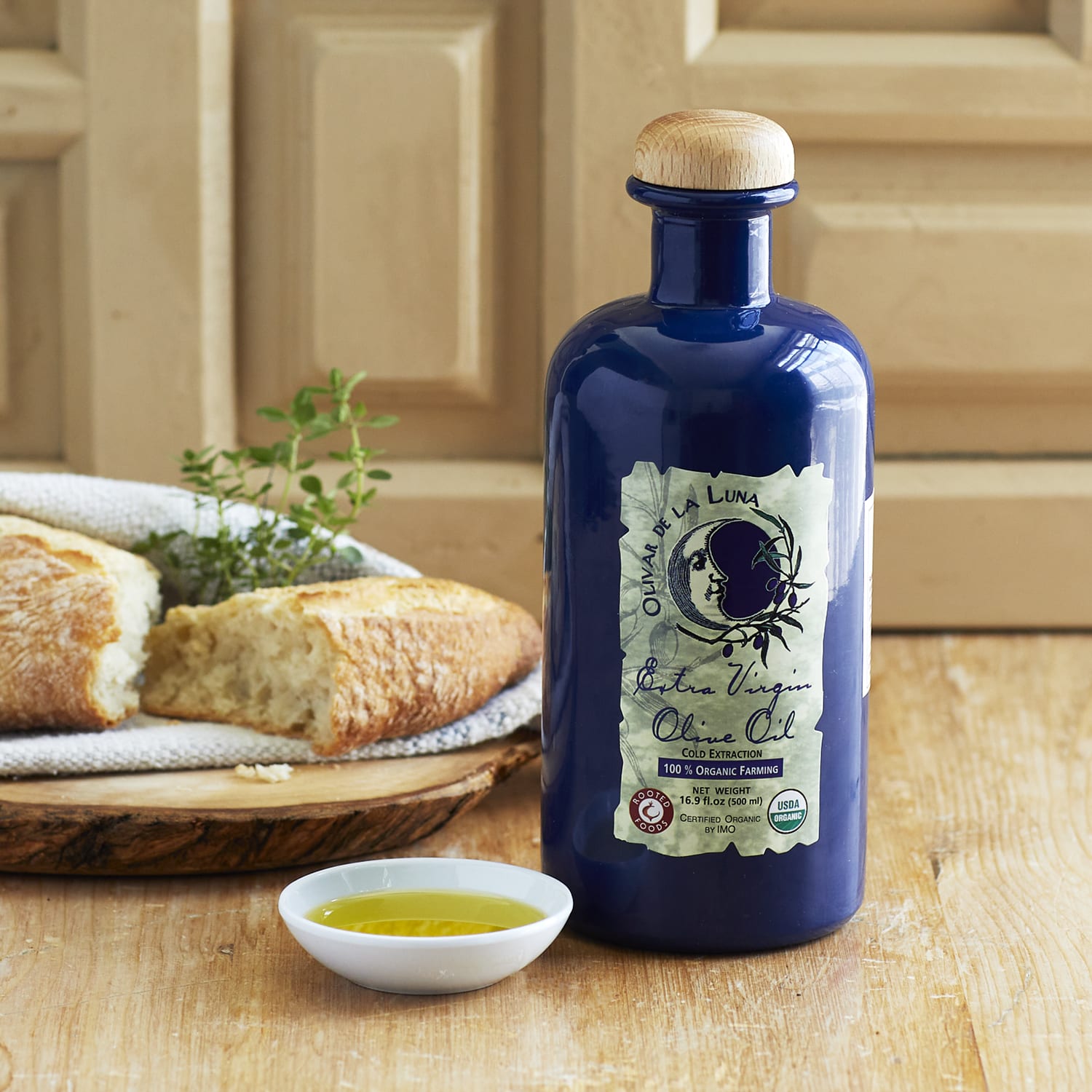
Olivar de la Luna Organic Extra Virgin Olive Oil
Olivar de la Luna Organic Extra Virgin Olive Oil
Pioneers in the Organic Movement
Item: OO-52 |
All Natural




Description
- Mild - subtle and buttery
- Organic, estate bottled
- Fruity flavor, smooth texture, with peppery finish
- Perfect oil for crusty bread and salad greens
- Size - 16.9 oz/500 ml
Olivar de Luna olive oil is drawn exclusively from estate grown olives. The main variety used is Nevadillo Blanco, an olive native to the region, with hints of Lechín, Picudo and Manzanilla. Similar to the Picual, Nevadillo Blanco has a pleasing fruity affect, with the final spicy tang preferred by Spaniards.
The ripe plump olives are taken only from the tree, never from the ground, and immediately pulped to assure a low level of acidity – never higher than 0.2º.
The fresh oil is protected from sunlight by a dark blue glass bottle - reminiscent of a traditional pharmaceutical flask. Evocative of the moonlight, it suggests that this high quality organic oil is a healing product.
The Santa Casilda estate where “Olivar de la Luna” is located is in the Los Pedroches forest, in the heart of the Sierra Morena in Córdoba. It is home to a spectacular landscape: Steeply sloping, rugged geography where olive trees coexist with patches of the forest meadows of the dehesa. An area of exceptional ecological importance, it was the first area in Spain to be set aside as organic for plant life and livestock.
The inhospitable, rugged and impossibly beautiful terrain of the Sierra Morena had been a favored sanctuary for bandits and political refugees. In a bid to put a stop to this situation, King Carlos III passed a law that enabled anyone who marked out, cleared and planted olive trees on an area of the Sierra Morena to become that plot’s rightful owner.
Faced with the appealing prospect of having their own property, many people headed deep into the Sierra Morena to tackle this arduous task. However, a lack of economic resources meant that many were forced to toil on other people’s properties, in exchange for a subsistence wage, as well as working on their own plot of land.
The Santa Casilda estate, where “Olivar de la Luna” is produced, bore witness to this very situation. The family that lived there hired their services out during the day, before taking advantage of moonlit nights to clear the ground and plant olive trees on their own cherished plot of land. The same olive trees survive today, silently grateful for all those years of toil.
“Olivar de la Luna” began life as a simple tribute to all those men and women across the ages who ensured that olive groves could thrive on the Sierra Morena.


